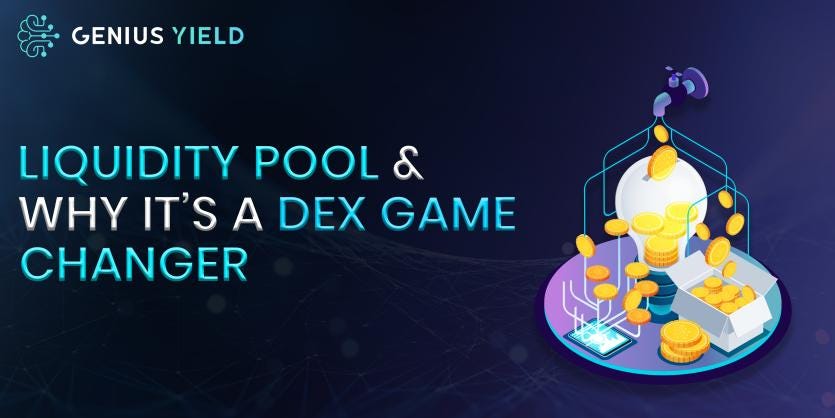
DeFi is synonymous with innovation. After Uniswap innovated the first Automated Market Maker (AMM) model in late 2018, the DEX scene has never been the same.
To function effectively, DeFi and DEXes build on the ideals of blockchain, heavily reliant on its community to function. Like in other core services in crypto, incentivization creates a win-win arrangement.
Central to DeFi and DEXes are liquidity pools. You might have been in the field for far too long. But what exactly are liquidity pools? And why do we need them?
In this article, let’s discuss what a liquidity pool is and why it is critical for the full functioning of decentralized exchanges.
What is a Liquidity Pool?
As the name suggests, a liquidity pool is a pool of tokens. The difference here is that a smart contract manages these tokens. A smart contract is a self-executing code riding on the decentralized, public ledger like Cardano.
By providing liquidity in a given pool, these tokens guarantee and facilitate smooth trading in decentralized exchange, which relies entirely on smart contracts, enabling trustless operation.
For all there is, liquidity pools in decentralized exchanges are central to allowing market participants to swap one token for another in a permissionless setup without an intermediary. The first liquidity pool was forwarded by Bancor — one of the first DeFi protocols providing a trustless liquidity infrastructure.
Why Liquidity is Important
Liquidity in any exchange — decentralized or not — is essential. This is because liquidity directly determines slippage. The higher the pool’s or the exchange’s liquidity is, the lower the slippage and, therefore, better user experience.
Thus, liquidity pools in DeFi are a game-changer. The advent of liquidity pools saw some leading decentralized exchanges grow their liquidity base to surpass even some of the first centralized cryptocurrency exchanges.
This was often accelerated not only by the promise of fees earned from their respective pools but other incentives like the distribution of the protocol’s native tokens. These bonuses are offered to create maximum engagement and cushion liquidity providers against unintended losses. Liquidity pools were explicitly designed to address the liquidity problem that plagued earlier versions of decentralized exchanges like Bancor.
How Liquidity Pools Work
Most decentralized exchange’s liquidity pool comprises two tokens. It creates the market for the pair of tokens contained in the pool. Typically, the creator of the pool also has the leeway to decide applicable rules of the pool besides setting the initial price of each token.
Also, the liquidity provider is typically encouraged to provide an equal value of each token in a given pool. The liquidity provider receives a liquidity provider (LP) token proportional to their stake in the pool for every liquidity provision. Users need to burn their LP tokens to reclaim their original liquidity and fees earned from the pool.
Types of DEX Models
Presently, decentralized exchanges can adopt the Automated Market Maker (AMM) model — which has found adoption in Ethereum and other account-based blockchains like Tron or EOS — , Order book model — like the one adopted by Genius Yield, a Dutch auction model, or a DEX aggregator.
In all cases, they rely on liquidity pools that continue to guarantee liquidity at any price level, allow liquidity providers to earn passive income, enable projects to receive instant liquidity without paying steep listing fees or submitting personal details, and help reduce trading fees.
The Genius Yield Approach to Liquidity
Notably, Genius Yield’s order book architecture enables the deployment of sophisticated order types found in CEXes like limit and dynamic orders. These orders can also execute their smart contracts and even connect to oracles triggering trades depending on prevailing market conditions or predetermined conditions. As such, this feature gives the DEX an edge over AMM-powered competitors. Most importantly, the Genius Yield DEX has the concentrated liquidity feature allowing LPs to allocate their capital at selected price ranges. This flexibility makes it possible for LPs to earn more, trade cheaply, and concurrently access more opportunities for yield optimization AI-guided trading strategies.
Besides, by launching on Cardano and drawing all the modern blockchain’s advantages, users can list any native token on Genius Yield, provide liquidity, and set the initial token price for others to swap. All traders pay a small swapping fee which is distributed to liquidity providers.